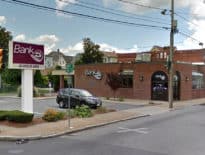Boston and its suburbs have become remarkably more diverse, new data show.
Nearly one in eight residents of some Route 128 communities are now foreign-born, Boston’s Orange Line corridor is becoming whiter, and several suburban cities and towns are now some of the most diverse places in Massachusetts, according to U.S. Census Bureau data analyzed by The Boston Foundation’s Boston Indicators project and the UMass Boston Donahue Institute.
The study compared results of the 1990 U.S. Census and the Census Bureau’s most recent American Community Survey.
Immigrants now represent over 10 percent of residents in at least 10 communities west of Boston, including Acton, Lexington and Framingham where the share is closer to 13 percent. Non-white residents made up at least 10 percent of most communities within Interstate 495 in 2016, with many affluent suburbs along Route 128 having some of the biggest increases. In communities from Bedford to Newton, for example, non-white residents now make up between one-fifth and one-third of the population.
The report specifically called out several suburban communities as hot spots of diversity. Randolph and Brockton are now nearly 40 percent African American, nearly double Boston’s 23 percent. Citing Massachusetts Community and Banking Council data, the report noted Brockton accounts for 18.8 percent of all home loans
to black borrowers statewide, even though Brockton sees only 1.7 percent of total loans made statewide. Malden and Boston’s Hyde Park neighborhood are now some of the most diverse places in the state, and have seen significant jumps in their non-white populations. The share of people of color living in Hyde Park increased from 28 percent in 1990 to 74 percent in 2016.
In Boston, neighborhoods around the southern half of the Orange Line have seen significant increases in their white population, including two census tracts in Roxbury and Jamaica Plain immediately east of the Jackson Square, Roxbury Crossing and Ruggles stops, where the non-white population dropped by 19 and 32 percent, respectively. Other census tracts have seen non-white population drops between 1 and 12 percent.




 |
| 


